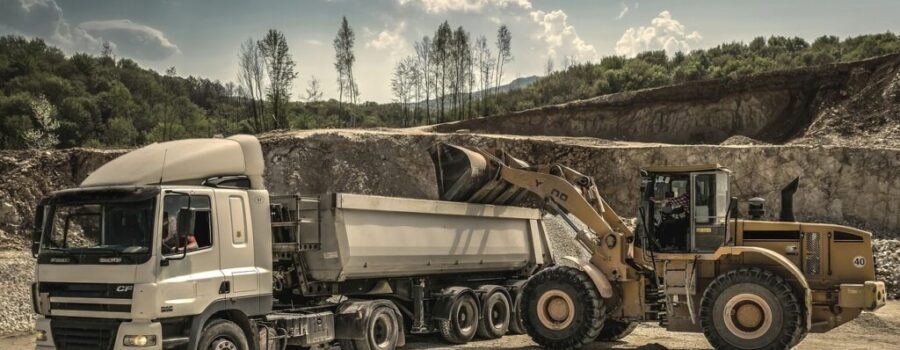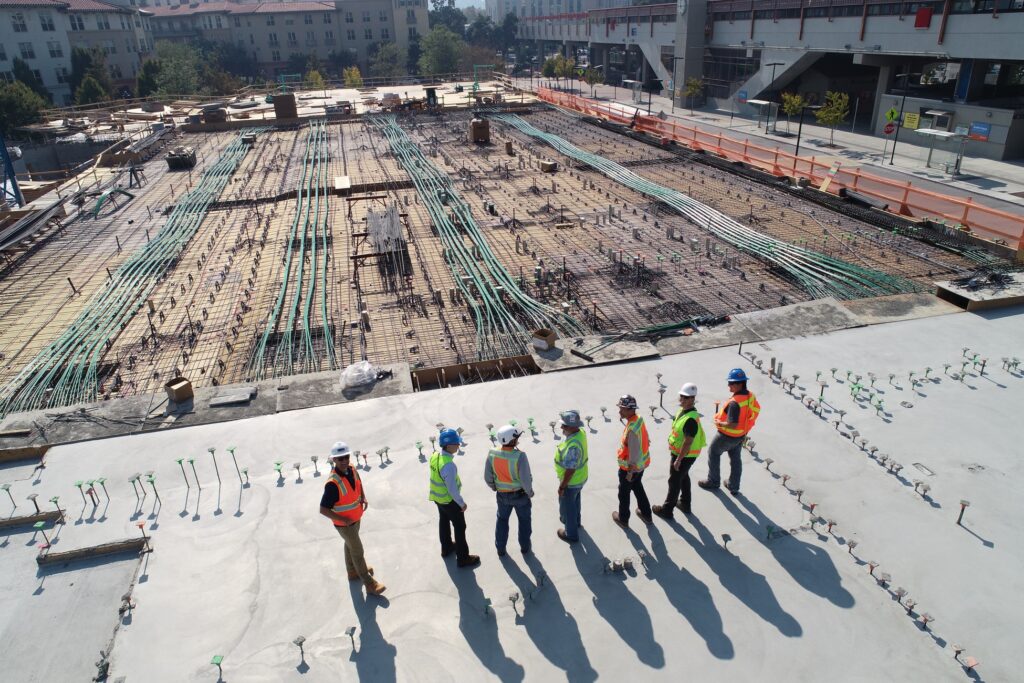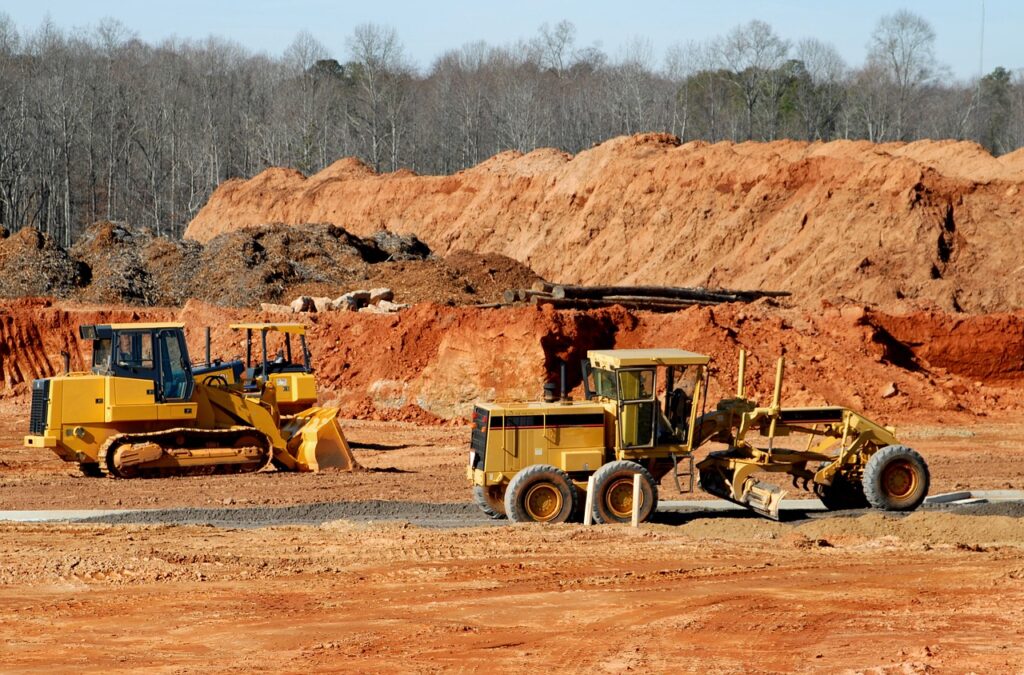
The Importance of Site Investigation with New Construction
In order for a new construction project to begin, there are a range of steps that you must take to ensure that the building is being constructed in the right location and with the right partners. Among the most important of these steps is a site investigation, which is designed to look at the subsurface conditions for the site. When this inspection occurs, information will be gathered about the hydrologic conditions and soil properties that will allow you to determine if the site can accommodate the type of building that you would like to develop.
The soil exploration that takes place during a site investigation involves taking soil samples and performing laboratory tests alongside on-site tests to identify the engineering properties of the soil. This process is also used to ascertain the location of groundwater and to report on possible hazards that can be found below the surface. When you obtain a site investigation for your construction project, it will invariably be broken down into five separate phases. Each stage is integral to the success of a site investigation.
The purpose of a site investigation is to make sure that the groundwater conditions are ideal, that the physical properties of rock and soil can accommodate construction, and that the building will be safe for anyone who enters it. Without the right soil conditions, anything that’s constructed on the site could be in danger of collapsing or being damaged. Site investigations are necessary before any new construction projects occur, which extend to residential homes and commercial buildings. This article goes into detail about the site investigation process and why this process is necessary for new construction projects.
Stages of Site Investigation
The process for a site investigation involves four different stages, which extend to:
- Site investigation
- General site exploration
- Detailed site exploration
- Sub-soil investigation and exploration report
1. Site Investigation

The initial stage of a site investigation involves simple site reconnaissance. During this phase, the site will be visually inspected. It’s also at this time that geological and topographical features for the area will be collected. Some of the primary observations that are made during this facet of a site investigation include:
- The location of the groundwater table, which is done by looking at the well on the construction site
- The presence of swamps, springs, and similar features
- The presence of dumping yards and drainage ditches
- The presence of any vegetation
- The nature and composition of the soil
- Identification of high flood-level marks at high-rise buildings and bridges
- An in-depth examination of aerial photographs pertaining to the site
- Geological maps and blueprints of current buildings in the area
- Past records of shrinkage cracks, floods, landslides, and other hazards in the region
2. General Site Exploration
The next phase of the site investigation involves general site exploration, which is preliminary and not quite as detailed as the next stage. During this phase of the process, site exploration occurs for light structures, airfields, highways, and small projects. The primary objective of this process is to create an estimate of the current sub-soil conditions without spending a significant sum of money.
During the general site exploration, a soil sample will be collected and tested in a laboratory. This testing will identify the density and moisture content of the soil. A compressive strength test will also take place. Some of the on-site tests that take place during a general exploration include sounding tests, penetration tests, and geophysical tests. Performing these tests will allow you to obtain the information that’s needed to properly identify the strength characteristics and density of any soils on the site.
With the information that you collect during this phase of the site investigation, you should be able to design and construct lighter structures. The information that you can gather during a general exploration of the site includes:
- An estimate of the values for the compressive strength of the soil
- The groundwater table position
- The composition of soil
- The extent and depth of the layers of soil
- The overall depth of the hard stratum from the ground level
- Various engineering properties of the soil, which occurs by obtaining a disturbed soil sample
In regards to disturbed sampling, this type of test aims to partially or fully modify the natural structures of different soils, which usually occurs by drilling the soil before obtaining the soil sample.
3. Detailed Site Exploration

If your construction project is meant to be a major one that involves complex building and design plans, a detailed site exploration will likely be necessary. Detailed exploration goes further than general site exploration and should be used when constructing major engineering projects, more complex projects, and heavy structures. The heavier structures that detailed site exploration applies to include high rise buildings, bridges, and dams. Unlike a general site exploration, the detailed site exploration process requires a substantial amount of capital. If your budget is relatively limited, it’s recommended that you stick to a general site exploration, which should be adequate if the project is small.
During a detailed site exploration, many different on-site tests will occur to make sure that a large construction project can take place without issue. The main tests that are performed during a detailed site exploration include:
- Vane shear test
- Plate load test
The laboratory tests that are necessary during a detailed site exploration extend to:
- Compressive strength test to identify exact soil properties
- Permeability tests
4. Sub-Soil Investigation and Exploration Report
The fourth and final stage of a site investigation involves the creation of a sub-soil investigation and creation report, which is very detailed and provides construction crews and developers with everything they should know about the construction site. This report can only be generated once the general or detailed site exploration process has been performed.
Sections Included in the Report:
- An introduction
- The scope of the site investigation
- A detailed description that highlights the type of structure that’s being built as well as the main purpose of the site investigation
- Details from the site reconnaissance that was performed
- The site exploration details, which include any sampling details as well as the location, depth, and number of boreholes on the site
- The techniques that were performed during on-site exploration as well as the results that were obtained from these tests
- Details and results of the laboratory tests that were performed
- Details of the level and position of the groundwater table
- Recommendations on improvements that can be made to the site if necessary
- Structural details and types of foundations that are recommended for the structure in question
- A brief conclusion
Purpose Behind Completing a Site Investigation

There are many reasons why completing a site investigation is needed for any development project that involves new construction. Along with saving money and reducing potential damages, performing a site investigation helps to identify safety requirements for the project and can assist in determining which materials should be used during the construction process.
Saves Money
In order to make sure that a site is suitable for a construction project, the site may need to be treated. However, soil treatment may be unnecessary if the site already accommodates the type of structure that you would like to develop. A site investigation will give you the information you require to ascertain if soil treatment is needed. If it is, nearby landowners may decide to help with the expenses, which saves you from needing to treat the soil solely with your own money.
Treating the soil now will also save you money by reducing the risk of complications once the construction process begins. For instance, weak foundations require continual maintenance. If you treat the soil beforehand, you can avoid these maintenance costs by ensuring a strong foundation for the property.
Provides Safety Background on the Project
Likely the most beneficial aspect of completing a site investigation is that you will be able to improve the safety of the project in question. Without having information on the characteristics of the soil, a new building could be developed on soil that doesn’t properly support it. Constructing a new building on certain soil types can pose a threat to nearby buildings as well as any on-site workers. One of the OSHA safety guidelines for construction projects involves making sure that hazards are properly communicated throughout the construction process. If you don’t conduct a site investigation, workers may be unaware of the various hazards that they could be exposed to.
Reduces Damages
Performing a site investigation before construction begins will also help you reduce the possibility of damages. If a building is constructed on problematic soil, the foundation for the building as well as the building itself could be damaged in the future. Whether the foundation is weak or the ground creates an ample amount of pressure around the foundation, there are many problems that can result from not obtaining a site investigation. With the information from the site investigation in hand, your construction crew will have the data they require to create a strong foundation that can withstand environmental pressures.
To make sure that the foundation is designed properly, it’s recommended that you bring in a geotechnical engineer to look at the site before the design of the foundation is made. These professionals can identify potential risks of continuing development as well as the solutions to these risks. The engineer may suggest that you choose a different site altogether or that you use a more suitable material that will add support to the foundation.
Aims to Assist in Determining Construction Materials
The site investigation will help you identify which materials should be used throughout the construction process. When you better understand the characteristics of the soil, you should be able to make more informed decisions about the materials that will work best for your project. Keep in mind that certain materials don’t pair well with specific soils, which may increase the development of cracks along the walls once construction has finished.
Site investigations are essential if you want to be confident that the funds for your development project are being invested wisely. Without the results from a site investigation, you may not know that the soil is weak or that it isn’t compatible with the materials you’re using for the foundation until it’s too late. While the costs for an in-depth site exploration can be high, the benefits of obtaining a site investigation far outweigh the costs and risks that may accrue without having one done.

Jason Somers, President & Founder of Crest Real Estate
With over 15 years of professional experience in the Los Angeles luxury real estate market, Jason Somers has the background, judgement and track record to provide an unparalleled level of real estate services. His widespread knowledge helps clients identify and acquire income producing properties and value-ad development opportunities.
Learn more about Jason Somers or contact us.



